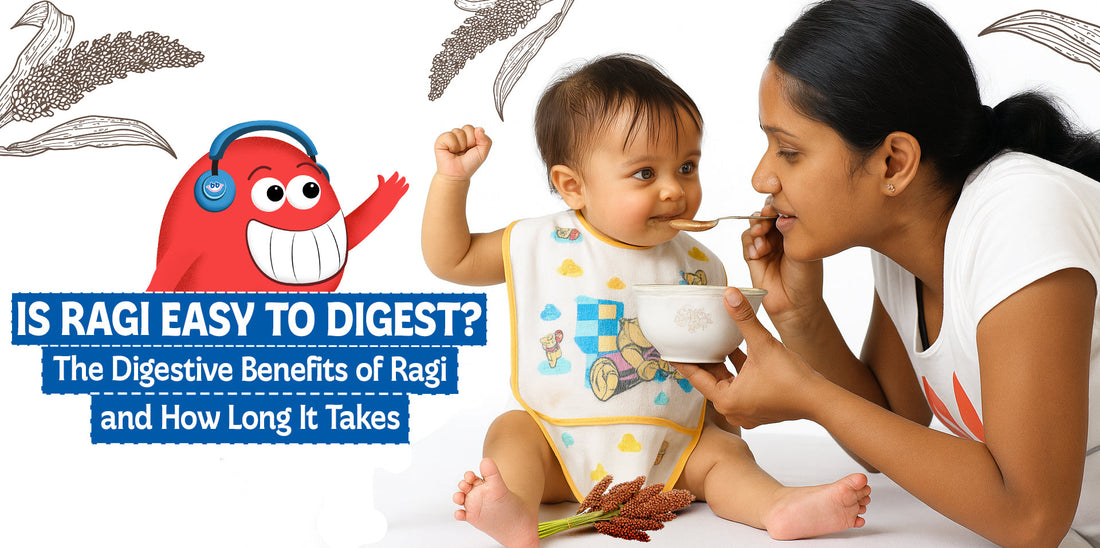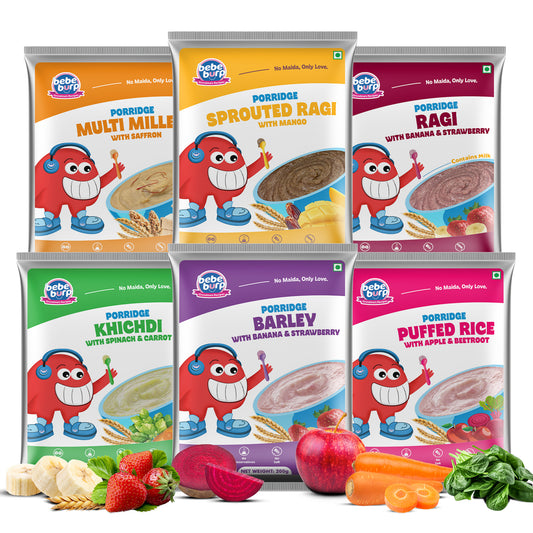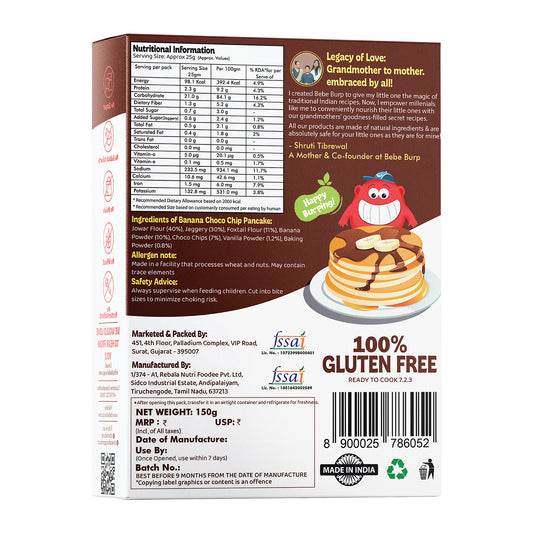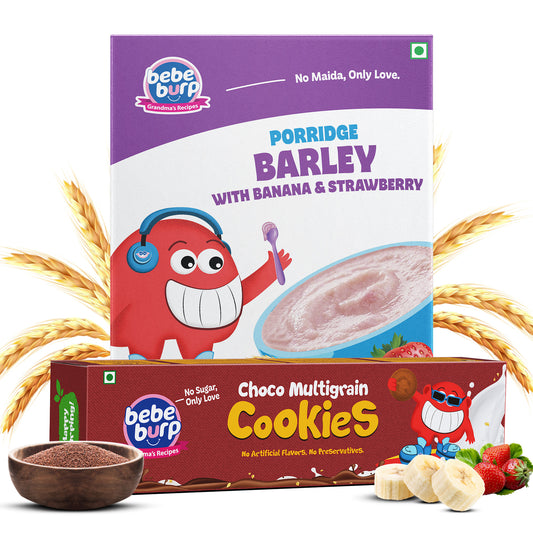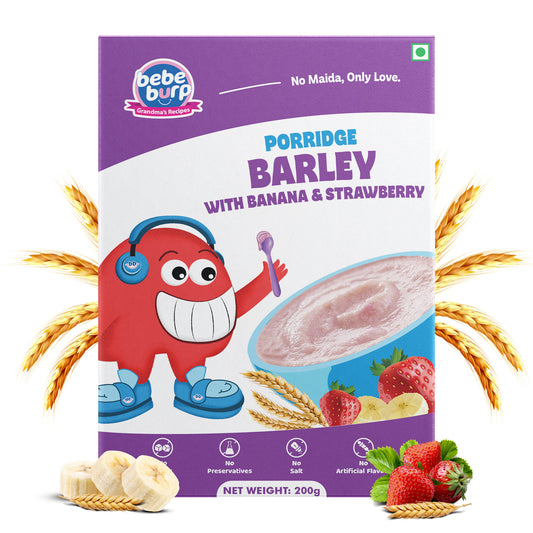In fact, many experts consider Ragi easy to digest due to its simple structure and natural goodness. Ragi requires 2-3 hours to be digested on average (depending on the method of cooking). Eager to learn why this can be called a supergrain-friendly to the digestive system? Let's explore.
What Is Ragi? A Nutritional Powerhouse for Digestive Health
Finger Millet, or Ragi (Eleusine coracana) as it is called in India, is a gluten free whole grain and has been used for thousands of years particularly in South India and Africa.
Ragi is a short grain plant that varies in color between reddish and brown and is normally converted into flour so as to prepare porridge, dosa, roti, laddoos and baby cereal.
Ragi has all the nutrients in their unrefined form and therefore is a healthy option as compared to polished grains. With calcium, iron, protein, fiber and all essential amino acids, it is quite a powerhouse food.
It is easily digestible and will not bother the stomach much which makes it ideal to consume by young kids, and also in adults, who have sensitive stomachs.
Ragi is low glycemic and free of gluten which makes it good not only for digestion but also to provide long-lasting energy and health in general.
|
Nutrient |
Per 100g (Ragi Flour) |
Digestive Health Benefits |
|
Dietary Fiber |
11.5g |
Promotes smooth bowel movements, prevents constipation |
|
Calcium |
344mg |
Supports healthy gut muscle contractions and enzyme function |
|
Iron |
3.9mg |
Helps prevent anemia, which can affect appetite and digestion |
|
Protein |
7.3g |
Aids in tissue repair and enzyme production |
|
Tryptophan (Amino Acid) |
~0.19g |
Helps regulate mood, sleep, and digestive enzymes |
|
Magnesium |
137mg |
Relaxes digestive tract muscles and improves bowel regularity |
|
Low Glycemic Index |
~55 |
Helps maintain stable blood sugar, preventing digestive imbalance |
|
Gluten-Free |
Yes |
Ideal for babies and people with gluten intolerance |
Is Ragi Easy to Digest? Key Factors That Influence Digestibility
Yes because ragi is easy to digest, especially babies and adults who have a sensitive stomach.
But why does it sit so well on the digestive system? This is because of the way it is made and prepared as well as the way it is added to the diet.
This is the summary of key issues, which have been found to interfere with the rate of ragi digestion:
1. The age of the one eating it. Age of the wearer of the garment
-
Infants below age 6 months might not find it easy
-
It can be well digested by older babies and adults
2. Preparation Method
-
Fermented or sprouted ragi can be digested more easily than raw or dry-roasted ragi.
-
Absorption is higher when ghee is added or cooked in porridge
3. Quantity Consumed
-
Too much can lead to bloating or gas in the sensitive stomachs
4. Tummy Sensitivity
-
High fiber grains such as ragi might be unfamiliar to some of the babies and thus, they may require time to get adjusted to the new food.
Pro Tip: Start the introduction of ragi in small quantities and observe the reaction of your or your baby digestive system.
How Long Does Ragi Take to Digest?
On average, ragi takes 3–4 hours to digest, depending on how it's cooked and who’s eating it.
For Babies:
-
Ragi porridge digests faster (around 2.5–3 hours) when cooked well and served warm
-
Avoid serving it late at night as it may cause heaviness
For Adults:
-
Cooked ragi (porridge, dosa, idli) takes 3–4 hours
-
Ragi flour-based dishes like roti may take longer due to fibre content
5 Benefits of Ragi for Digestive Wellness
Ragi not only nourishes, but it also supports gut health. Here’s how:
- Large Fiber Content- Helps to avoid constipation and maintain digestion regular
- Natural Probiotic Properties (in their fermented state)- fertilizing gut-friendly bacteria
- Low Glycemic Index- aids the stability of blood sugar and minimises cravings
- Easy on the Stomach- when converted into porridge, this acts as a relaxant
- Gluten-Free - Suitable for people with gluten allergy or celiac disorders
Tips to Make Ragi Easier to Digest
These are the ways to ameliorate or make ragi digestible to babies and those who have sensitive stomachs:
-
Soak before Cooking: Performs the same as the above and disperses anti-nutrients
-
Germinate the Ragi: adds nutrition value and improves its digestibility in the gut
-
Cook It Well Enough: You do not want to feel bad because you ate raw ragi or undercooked ragi
-
Add Ghee or Coconut Oil: Healthy fats help with digestion
-
Warm Serving: Serves to Prevent Gas and the Easing of Digestion
-
Fermented Ragi: Better in dosa, idli, or ragi ambli (kanji).
Common Myths About Ragi Digestion Debunked
So let's get the mix straightened out! There is a misconception about Ragi in the area of digestion. The most popular myths and facts are listed below:
Myth 1: Ragi is Gas Forming in Babies
Fact: Ragi can be easily digested. Gas only appears when it is introduced too early or when it is cooked incorrectly.
Myth 2: Ragi Is Too Heavy for Small Babies
Fact: It is one of the best foods to feed babies with, when made into thin porridge or germinated ragi.
Myth 3: Ragi is not to be Used During Loose Motions
Fact: Ragi is rich in fibre and aids in digestion. Where diarrhoea is mild, a thinner one can be used, but only under the recommendation of a paediatrician
Myth 4: Ragi Cannot Be Digestible Without Ghee or Milk.
Fact: Ragi does not require fat to be digested easily. Simple ragi porridge tends to be softer for babies.
Myth 5: Adults should not have Ragi at Night
Fact: Ragi is a low-release carb, and it can aid sleep. Please avoid overeating and keep your meals light.
Ragi vs. Other Grains: Digestibility Showdown
Here’s how ragi compares to other common grains:
|
Grain |
Fiber Content |
Gluten-Free |
Digestibility |
Baby-Friendly |
|
Ragi |
High |
Yes |
Easy (when cooked) |
Yes (6M+) |
|
Rice |
Low |
Yes |
Very Easy |
Yes (6M+) |
|
Wheat |
Moderate |
No |
Moderate |
May cause allergie |
|
Oats |
Moderate |
Yes |
Easy |
Yes (6M+) (if plain) |
|
Barley |
High |
No |
Moderate |
Watch for gas |
Ragi ranks high in digestibility, especially when compared to wheat and barley.
Conclusion
Ragi is another type of grain which is gentle, nutritious, helps the digestion hence perfect grain to be used by both infants and grown ups.
When cooked well, it may be easily digested and provides an extensive set of advantages to the gut.
Short Summary:
- It will take Ragi 3-4 hours to digest
- Digestibility is enhanced by soaking, sprouting and fermenting
- This is perfect to use in babies who exceed 6 months, as well as sensitive adults who are victims of gluten sensitivity
Bringing ragi into the diet of your baby? Begin with ragi porridge twice to thrice a week and watch their stomachs react!


